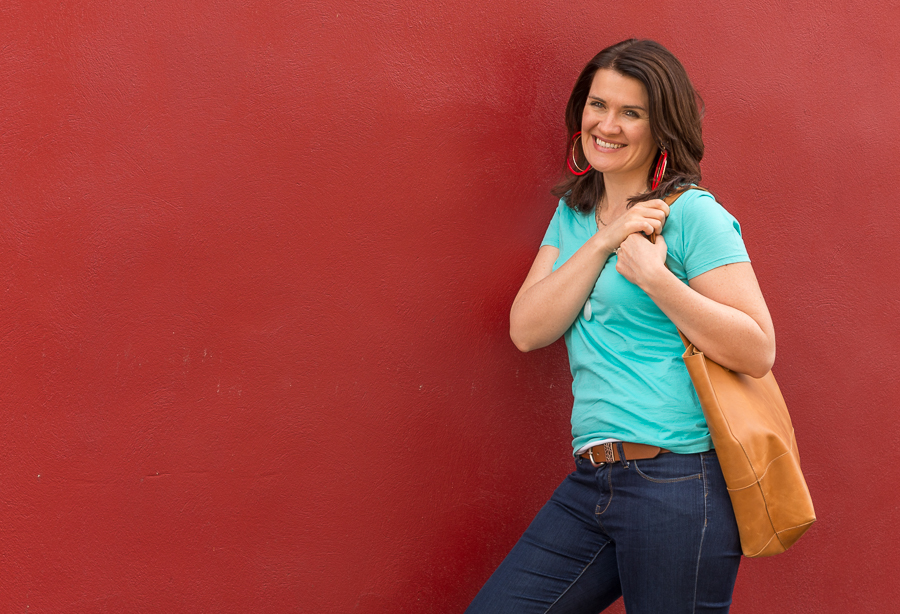When I was five or six, I heard a word I didn’t understand, said in a movie. But it sounded cool. So one day, I went up to my parents and I used the word. Like it was the most natural thing in the world, like I knew what it meant.
In under a half a second, my mom grabbed me, pulled me into the bathroom, and put soap in my mouth. She explained to me, while bubbles started seeping between my lips, that I should never say that word. It was a bad word, and I should never speak like that. Then she let me rinse my mouth out.
Fast forward to today. The word that landed soap in my mouth is now commonly spoken in our culture. Things have changed. But so has my understanding of all the “bad” words my parents taught us not to say. I even say them now and then. At times, understandably, and others, when I probably should use another word.
Isn’t so much of adulthood like this?
As kids we’re taught certain things are clearcut, good or bad. But then, as we get older we find things are more ambiguous than we’ve been told. We hear our parents use words that they used to put soap in our mouths for saying. We learn it is socially acceptable to lie if the truth will hurt someone’s feelings. And we find ourselves numbing painful life situations with food or tv, when we know there probably is a better way to face them.
Adulting in this world isn’t black and white.
Yet for some reason, we’ve begun mentally and socially organizing our world this way. When someone does something that we think is bad publicly, we unfollow them. When someone says something we disagree with, we attack them on social media. And in either case, we label these people as “other.” Because what they said or did is not in line with what we think we’d say or do—they are not on our team. All of sudden, it’s
Us vs. Them
Republican vs. Democrat.
Pro life vs. Pro Choice.
Fill in the blank vs. Fill in the blank.
The choices are endless, and yet have begun to drastically limit our relationships and who we learn from. As if the only way to tell if someone is good, is to make sure they check off all the same boxes at the ballot box. Or subscribe to the same belief system. As if those things are fool-proof, exhaustive tests to determine a person’s worth in our lives and our world.
There is this story we tell in our culture about who is with us, and who isn’t.
Last summer, a friend of mine sent me text. She had posted on social media that she was excited to start reading a book, and included a picture of it. A few months earlier, the writer of that book had said some controversial things. Soon, a friend commented on her post that she couldn’t believe she’d read a book by that author. My friend texted me because she didn’t know how to respond. She knew where she stood—which wasn’t exactly with the author, and not quite with her friend—but didn’t feel it had to hinder her from reading the book. All of sudden it felt as if she had to choose; her friend or the author.
I am not sure when it started, but there is this story we tell in our culture about who is with us, and who isn’t. It revolves around hot button issues, and divides us more clearly than battle lines. It tells us that good is only found in the familiar.
But so much of my life has taught me otherwise.
There were times in middle school, when the “bad students” took me in when the “good” ones stopped sitting with me at lunch. In college, when exchange students from India and Hong Kong taught me the beauty of their culture and the amazing flavor of their food. Then later, when I traveled to Chile and India, and found incredible community there. These experiences and others like them, have shown me that same isn’t always good, helpful, right, or even best.
Just as I had to grow up and learn for myself when bad words were and weren’t appropriate, we as American’s need to learn to think for ourselves. We need to stop telling the story where “right” and “good” looks like us, and agrees completely with us. Instead we need to stop getting angry when things aren’t comfortable, and instead take them in through open yet appropriately critical eyes. And above all, we need to stop virtually crucifying each other online, when we don’t even know each other in real life.
Have you told this good vs. bad story in your own life?
What does it look like for us to live a different story?
Would you like more from Melissaschlies.com delivered to your inbox?
If so, subscribe here.
Photo by Mário Júnior on Unsplash












Adulting isn’t black and white any more, is it, Melissa? Thank you for your thought-provoking words! I am saddened by so many harsh and cruel words that strangers say to one another on social media. We must learn to be kind, most certainly!
I so agree with this. The body of Christ is diverse, and not one of us has a corner on the truth. All of us will get it wrong sometimes. We definitely need to learn from those different from us.
exactly, Heather! We miss so much when we only look to those who are like us.